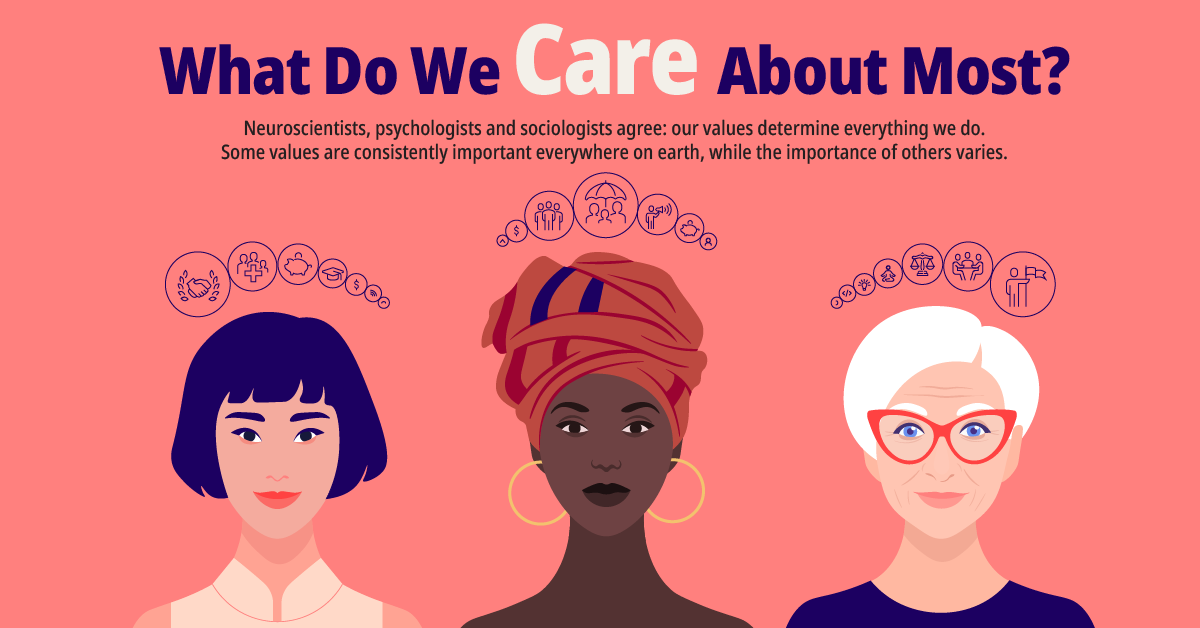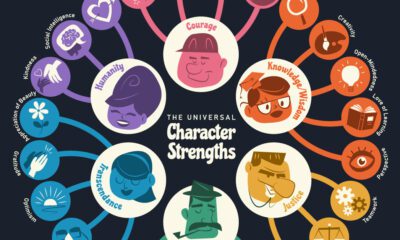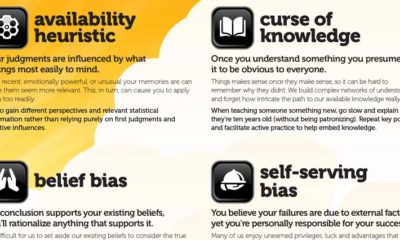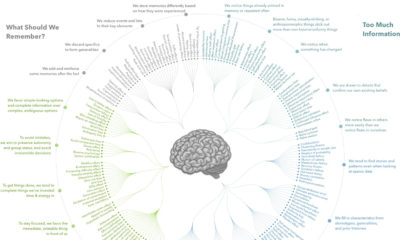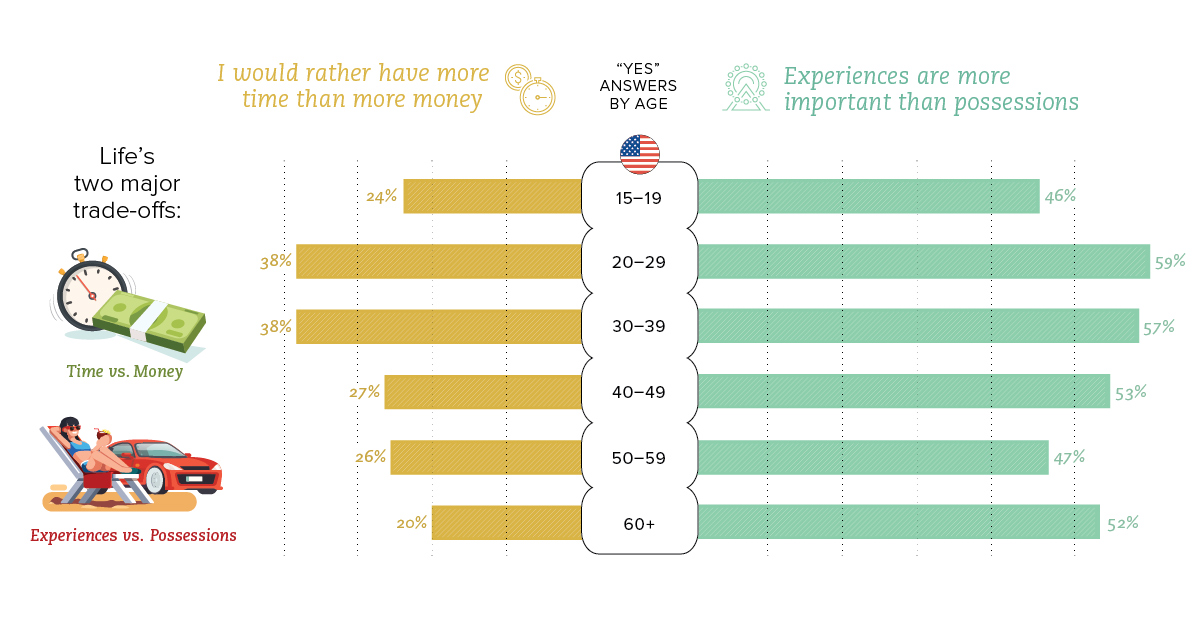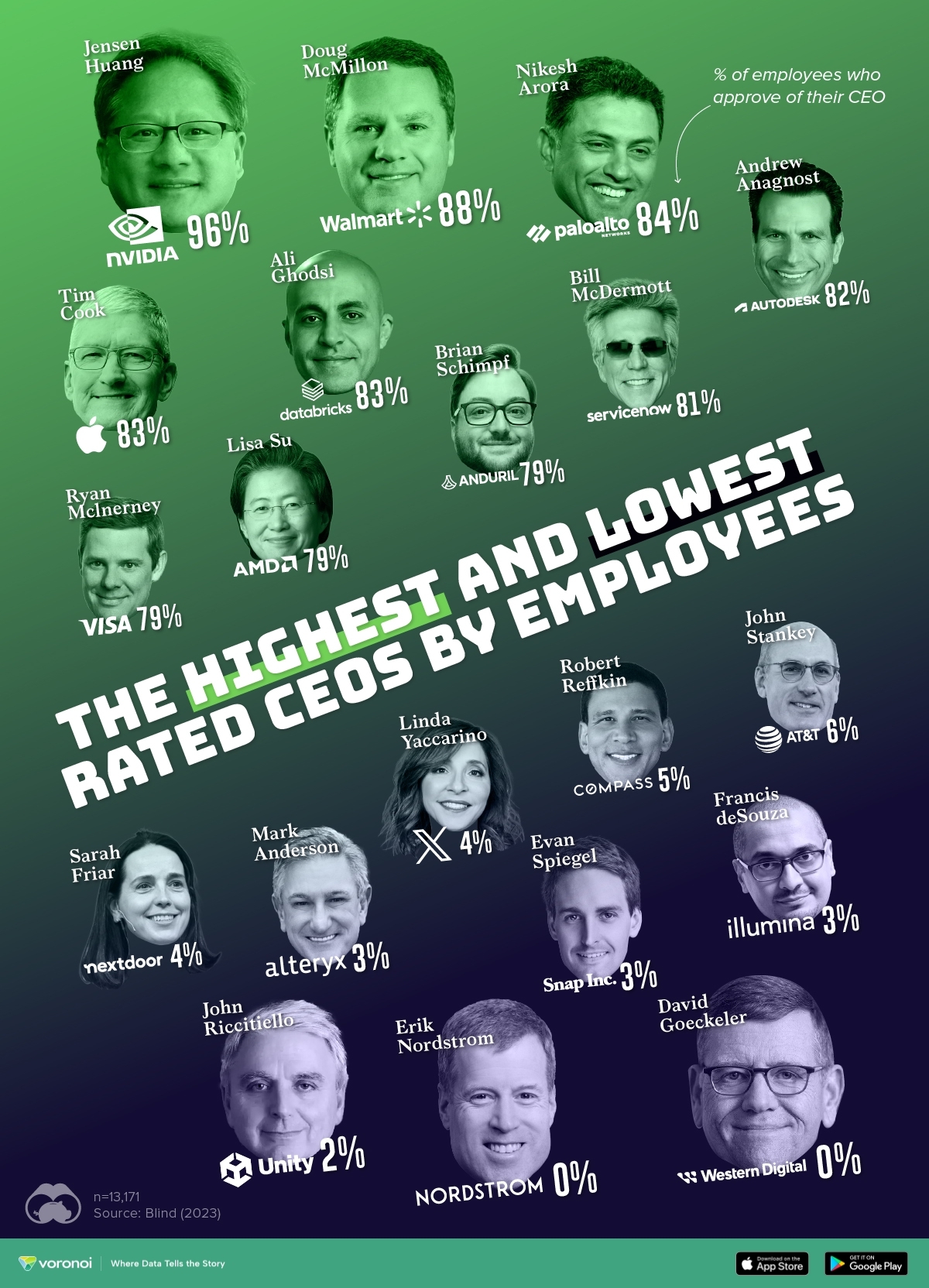Leadership
The World’s Most Influential Values, In One Graphic

The World’s Most Influential Values, In One Graphic
Our basic values can inform ideals, interests, political preferences, environmental views, and even career choices.
With sweeping data covering half a million surveys in 152 languages, Valuegraphics identifies 56 values that influence human behavior. It uncovers what people care most about around the world, through a contextualized dataset.
The 10 Most Important Values
Individual motivations and values are universally organized. That said, research shows that the hierarchy of these values varies significantly.
According to Valuegraphics, here are the top 10 values we share across cultures.
| Rank | Value |
|---|---|
| 1 | Family |
| 2 | Relationships |
| 3 | Financial Security |
| 4 | Belonging |
| 5 | Community |
| 6 | Personal Growth |
| 7 | Loyalty |
| 8 | Religion/Spirituality |
| 9 | Employment Security |
| 10 | Personal Responsibility |
While it may not be surprising that family emerges as the most important value globally, it’s interesting to note that a number of other ‘connectedness’ values—such as relationships and belonging—emerged in the top 10. Values of loyalty, and religion/spirituality ranked #6, and #7, respectively.
At the same time, security-related values, including financial and employment security, score highly around the world.
From a business and leadership context, values are interesting in that they can guide how people and consumers make their decisions. As people interact with the world, different experiences can ‘engage’ their most closely-held values.
“If you can understand what your target audience cares about, what they spend their lives chasing, now you have an actual chance to use data to understand how to engage and influence and motivate them.”
-David Allison, Founder of Valuegraphics
The Full List of the 56 Most Influential Values
Covering 401 metrics and 370 questions, how did all 56 values break down within the extensive Valuegraphics database on a global level?
| Rank | Value |
|---|---|
| 1 | Family |
| 2 | Relationships |
| 3 | Financial Security |
| 4 | Belonging |
| 5 | Community |
| 6 | Personal Growth |
| 7 | Loyalty |
| 8 | Religion/Spirituality |
| 9 | Employment Security |
| 10 | Personal Responsibility |
| 11 | Basic Needs |
| 12 | Harmony |
| 13 | Health/Well-being |
| 14 | Experiences |
| 15 | Respect |
| 16 | Compassion |
| 17 | Social Standing |
| 18 | Creativity & Imagination |
| 19 | Trustworthiness/Honesty |
| 20 | Security |
| 21 | Education |
| 22 | Tradition |
| 23 | Balance |
| 24 | Love |
| 25 | Material Possessions |
| 26 | Patience |
| 27 | Morality |
| 28 | Righteousness |
| 29 | Friendships |
| 30 | Authority |
| 31 | Positive Environments |
| 32 | Happiness |
| 33 | Ambition |
| 34 | Self-Control |
| 35 | Self-Expression |
| 36 | Environmentalism |
| 37 | Independence |
| 38 | Wealth |
| 39 | Politeness |
| 40 | Generosity |
| 41 | Equality |
| 42 | Service to others |
| 43 | Dependability |
| 44 | Courage |
| 45 | Cooperation |
| 46 | Tolerance |
| 47 | Leisure |
| 48 | Influence |
| 49 | Intimacy |
| 50 | Political Freedom |
| 51 | Peace |
| 52 | Money |
| 53 | Unselfishness |
| 54 | Confidence |
| 55 | Freedom of Speech |
| 56 | Determination |
Across nine regions, the value of social standing stood at #17, while environmentalism came in at #36. Interestingly, both values of wealth (#38) and money (#52) ranked lower on the spectrum.
Meanwhile, respect (#15) and compassion (#16) values fell closer to the top.
Windows of Insight
While many similarities exist across cultures, a number of fascinating differences emerge.
Take morality, for example. Across all regions, it illustrated some of the widest variance—it was the second-most important value in the Middle East, whereas it came in near the bottom in Central and South America. Another notable outlier surrounds the value of patience. The African region placed the value within its top five. By contrast, it ranked globally about mid-way (#26) through the list.
Another fascinating discovery is how both North America and the Middle East ranked the value of authority—both ranked it equally (#17), significantly higher than the global average of #30. Meanwhile, the value of tradition saw the highest ranking in Central & South America, but the lowest in Europe.
As the world becomes increasingly complex, understanding how values impact our attitudes and behaviors can help us deepen our understanding across several avenues of life. Consumer research, marketing, leadership, psychology, and many other disciplines all fall within the broad spectrum of the influence of what humans value.
Leadership
Who Are America’s Most Popular CEOs?
Social network Blind polled 13,000+ respondents on whether they approved or disapproved of the way their CEO handled the job, generating the approval rating of more than 100 CEOs.
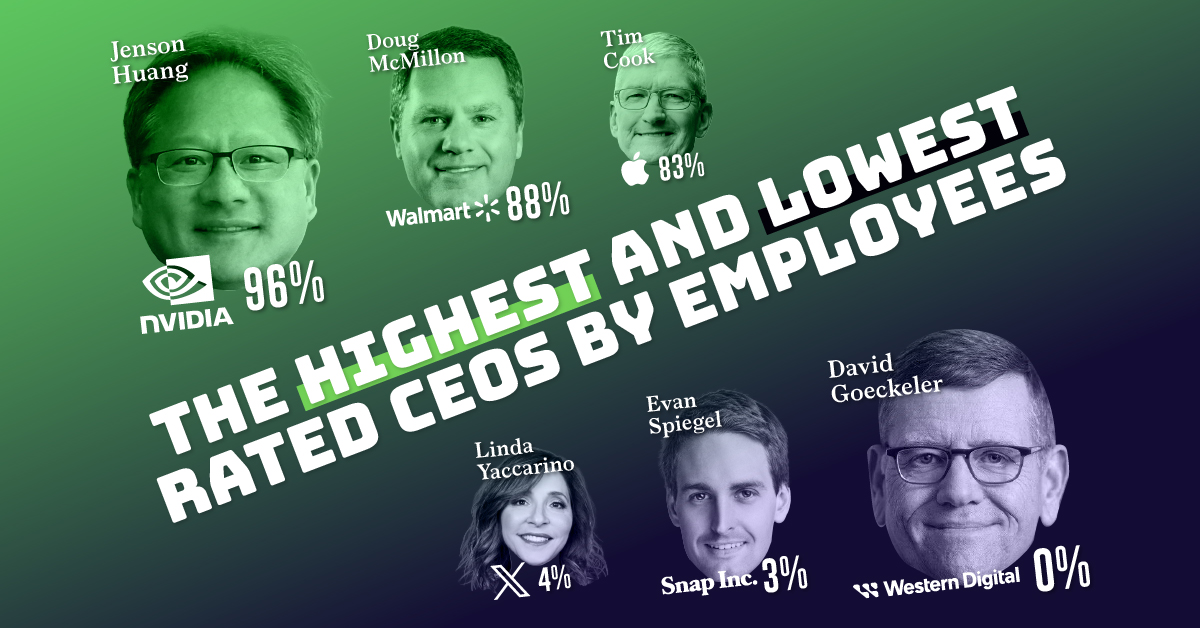
Who Are America’s Most Popular CEOs?
What do the employees at America’s largest companies think of the leadership?
To answer that, we visualize CEO approval ratings gathered by professional social network Blind.
The results are based on a survey of 13,171 verified professionals in the U.S., conducted between August 18th–23rd, 2023. Respondents were asked if they approve or disapprove of the way their CEO is handling their job.
Top 10 Popular CEOs By Their Employees’ Approval Ratings
By far, the most popular CEO right now (according to Blind’s respondents anyway) is Nvidia’s Jensen Huang, with an astonishing 96% approval rating.
Huang’s numbers point to a theme in the data. Blind notes that there is a correlation between company stock performance and CEO approval rating. Nvidia’s critical role in the artificial intelligence hype train has sent shares up nearly 3x year-on-year. Their financials for the last three quarters show that profit is already up more than four-fold from last year.
Crucially, Huang also avoided layoffs that were otherwise rampant in the tech industry, helping his popularity amongst the staff.
Here are the top 10 most popular CEOs according to Blind’s poll.
| Rank | Company | CEO | Approve (%) |
|---|---|---|---|
| 1 | Nvidia | Jensen Huang | 96% |
| 2 | Walmart | Doug McMillon | 88% |
| 3 | Palo Alto Networks | Nikesh Arora | 84% |
| 4 | Apple | Tim Cook | 83% |
| 5 | Databricks | Ali Ghodsi | 83% |
| 6 | Autodesk | Andrew Anagnost | 82% |
| 7 | ServiceNow | Bill McDermott | 81% |
| 8 | Anduril Industries | Brian Schimpf | 79% |
| 9 | AMD | Lisa Su | 79% |
| 10 | Visa | Ryan Mclnerney | 79% |
In fact, the Blind survey uncovered that all of the 10 most popular CEOs, with the exception of Andrew Anag from AutoDesk, did not cut jobs in the last year.
The opposite is true for some of the lowest-rated CEOs.
The Least Popular CEOs By Employee Approval Ratings
Eric Nordstrom (Nordstrom) and David Goeckeler (Western Digital) shared the lowest approval rating possible in the poll: 0%. From Blind’s methodology section, this means not a single surveyed employee answered “strongly approve” or “somewhat approve” to the question.
Both companies cut nearly 200 jobs in 2023, with Nordstrom also responsible for the job losses amongst the company’s wage workers, who staffed the many retail stores the company shuttered.
Here’s the top 10 least popular CEOs according to Blind’s poll.
| Rank | Company | CEO | Approve (%) |
|---|---|---|---|
| 1 | Nordstrom | Erik Nordstrom | 0% |
| 2 | Western Digital | David Goeckeler | 0% |
| 3 | Unity Technologies | John Riccitiello | 2% |
| 4 | Illumina | Francis deSouza | 3% |
| 5 | Snap | Evan Spiegel | 3% |
| 6 | Alteryx | Mark Anderson | 3% |
| 7 | X (formerly Twitter) | Linda Yaccarino | 4% |
| 8 | Nextdoor | Sarah Friar | 4% |
| 9 | Compass | Robert Reffkin | 5% |
| 10 | AT&T | John Stankey | 6% |
Also featuring on this list of least-liked CEOs: Evan Spiegel (3%), who reduced Snap’s workforce by a fifth and Linda Yaccarino (4%), who heads X (formerly Twitter) that has been in turmoil since Elon Musk acquired the company in October, 2022.
-

 Markets1 week ago
Markets1 week agoU.S. Debt Interest Payments Reach $1 Trillion
-

 Markets2 weeks ago
Markets2 weeks agoRanked: The Most Valuable Housing Markets in America
-

 Money2 weeks ago
Money2 weeks agoWhich States Have the Highest Minimum Wage in America?
-

 AI2 weeks ago
AI2 weeks agoRanked: Semiconductor Companies by Industry Revenue Share
-

 Markets2 weeks ago
Markets2 weeks agoRanked: The World’s Top Flight Routes, by Revenue
-

 Countries2 weeks ago
Countries2 weeks agoPopulation Projections: The World’s 6 Largest Countries in 2075
-

 Markets2 weeks ago
Markets2 weeks agoThe Top 10 States by Real GDP Growth in 2023
-

 Money2 weeks ago
Money2 weeks agoThe Smallest Gender Wage Gaps in OECD Countries

